Title : Early detection of hip joint infections using Point-of-Care Ultrasound (POCUS): A case series
Abstract:
Introduction: Hip infections from diverse etiologies—including septic arthritis, psoas bursa infection, tracking of psoas abscess, and infected chronic deep vein thrombosis—represent limb-threatening emergencies requiring prompt diagnosis and management. Point-of-care ultrasound (POCUS) has emerged as a valuable diagnostic tool in the emergency department, potentially enabling earlier differentiation between these infectious causes affecting the hip joint region, facilitating appropriate source control.
Case Presentations: We present two cases demonstrating POCUS utility in diagnosing septic arthritis. In the first case, an 88-year-old immunosuppressed female with rheumatoid arthritis presented with progressive atraumatic left groin pain without fever. She was unable to bear weight in the emergency department. POCUS revealed a 5.9 mm effusion along the anterior recess of the left femoral neck not identified on the other side. Proximal deep vein thrombus in lower limbs and psoas abscess were excluded using POCUS. Subsequent CT imaging, which instead showed insufficiency fractures but did not pick on the effusion. Despite an initially negative joint aspirate, elevated inflammatory markers (WCC 25.97 × 10?/L, CRP 114 mg/L) and unilateral effusion prompted early orthopedic review for joint irrigation and empirical antibiotic therapy. Blood cultures later confirmed Staphylococcus aureus infection.
The second case involved a 30-year-old male with intravenous drug use history presenting with acute, severe right hip pain. Despite being apyrexial, he demonstrated significantly elevated inflammatory markers (CRP 180 mg/L, WCC 18 × 10?/L). POCUS identified a 2.5 × 3 cm fluid collection in the right hip joint. Likely differentials were joint effusion or infected psoas bursa. POCUS also demonstrated bilateral calf abscesses at the injection site. Proximal deep vein thrombus was excluded on bilateral legs by POCUS.
Discussion: Diagnosing hip joint infections remains challenging due to their non-specific clinical presentation, particularly in high-risk populations including the elderly, immunosuppressed patients, and intravenous drug users. Joint aspiration yields false-negative results in many cases, with Gram stains positive in <40% of cases.
Computed tomography effectively detects bony pathology but has limited sensitivity for early joint effusions or cartilage destruction. Furthermore, standard hip views may miss infections tracking from psoas bursae, which communicate with the hip joint in approximately 15% of cases. While MRI offers superior assessment of early joint infections, its availability in emergency settings remains limited.
POCUS provides immediate bedside assessment with several advantages: it enables dynamic comparison with the contralateral hip, improving detection of subtle effusions; assists in ruling out differential diagnoses such as deep vein thrombosis or psoas abscess; and can guide joint aspiration procedures. These capabilities support early specialist referral and prompt antibiotic initiation.
Conclusion: These cases highlight the critical role of POCUS in diagnosing hip joint infections like joint effusion and psoas bursitis. CT imaging alone may result in missed diagnoses when early joint effusions or psoas bursa involvement are present. Negative joint aspirate does not exclude infection, necessitating a multi-modal diagnostic approach integrating POCUS findings, inflammatory markers, and clinical suspicion. Early detection through POCUS and prompt surgical input for source control are essential for preventing joint destruction and improving patient outcomes.



